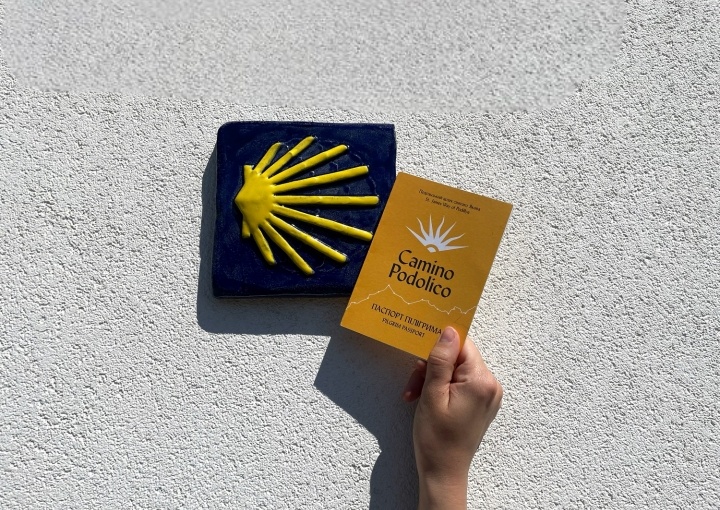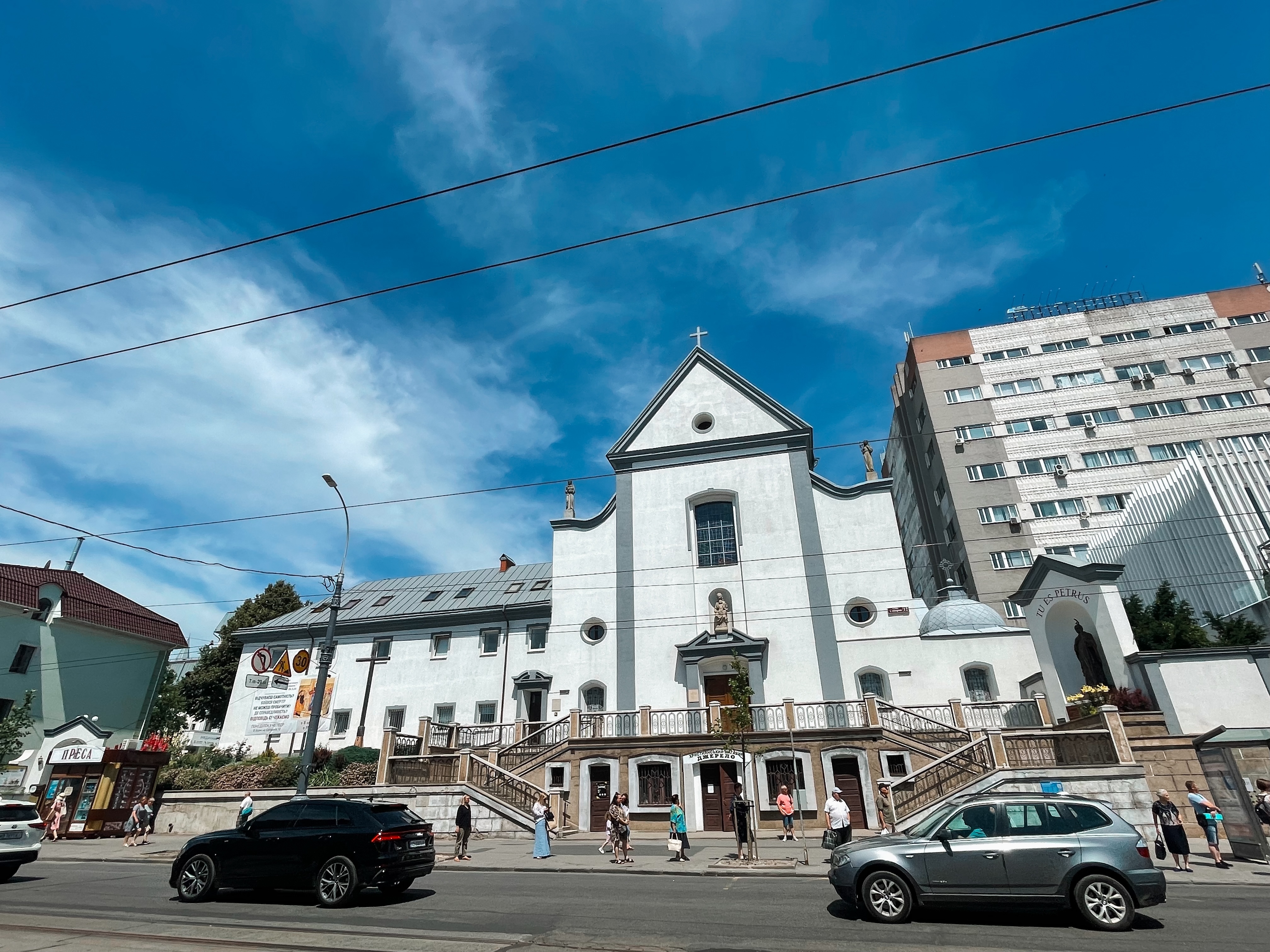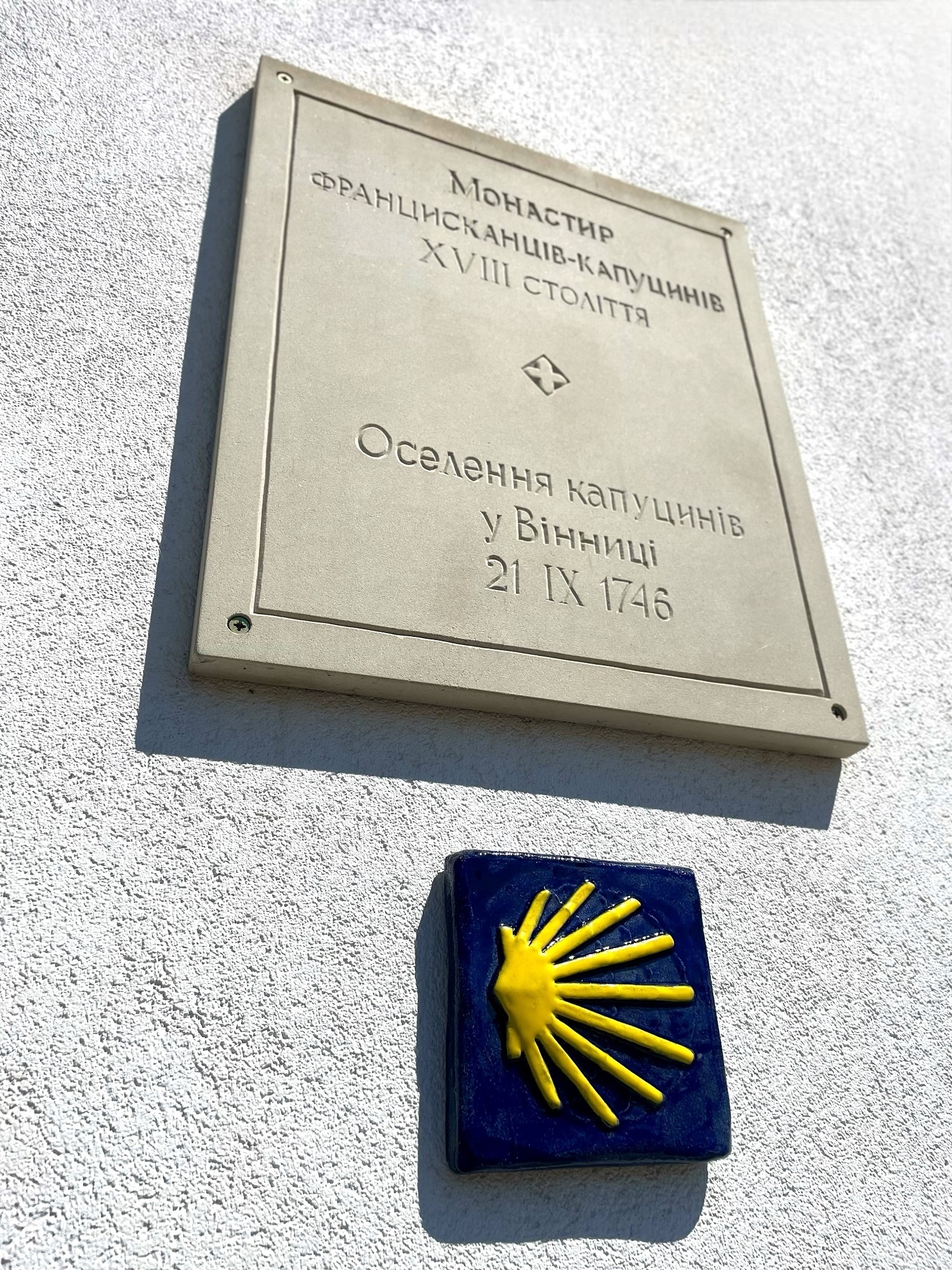
A ceramic plate in the form of a shell was installed at the starting point of the Camino Podolico cultural and pilgrimage route in Vinnytsia, Ukraine. It is a world-renowned symbol of the certified European Cultural Route to the Cathedral of St. James in Spain, of which the Camino Podolico route is a part since 2023.
From now on you can see the seashell in the city centre on the wall of the Church of the Holy Virgin Mary of Angels (12 Soborna Street).
There are a lot of versions, legends and myths why exactly the sea scallop shell became a symbol of Saint James the Apostle. According to one of them, after his martyrdom in Jerusalem, the apostle's body was transported to Spain, but the ship got caught in a storm. Later, the waves carried the saint's body to the shore, covered with scallop shells, which helped to find his final resting place. However, there are also more practical explanations, such as the abundance of scallop seashells along the pilgrimage route to the Santiago de Compostela Cathedral. The Crusaders of the Order of St. James, protectors of pilgrims, first introduced it as their own symbol. Also people used shells to mark themselves as pilgrims (to avoid robber attacks) and to collect water from springs and streams (a similar vessel with holy water in the form of a shell is also found at the entrance to the Vinnytsia church).

It is symbolic that in Vinnytsia a ceramic plate with a shell was cast in the shape of the very first Camino plate, which was presented to Vinnytsia in the fall of 2019 by the mayor of the Lithuanian sister city of Panevėžys Rytis Mykolas Račkauskas. It was then, together with former member of the European Parliament Laima Andrikienė, that he invited Vinnytsia to join the international network of the Saint James Way.
Less than 2 years ago, the Saint James Way of Podillya was created and launched in test mode connecting the cities of Vinnytsia and Kamianets-Podilskyi. In another two years, in July 2023, Vinnytsia was officially accepted into the European Federation of Saint James Way as the coordinator of the tourist route. And this year, Camino Podolico has been certified as part of the cultural route of the Council of Europe.

By the end of June, similar signs – 10 plates with seashells – will be sent to the coordinators of the Camino Podolico route to be installed at landmarks along the way. In general, this shell is not only a symbol, but also a signpost on the Camino path. Visually, it looks like an arrow that indicates the direction of travel to Santiago de Compostela, where all pilgrims' paths converge. That is why, for example, in Vinnytsia it is turned to the west.
All 11 plates with seashells for the Camino Podolico route were made in the pottery art space "Etno Chary" by order of the Department of City Marketing and Tourism of the Vinnytsia City Council. This was done using the grant funds from the Council of Europe and the European Commission.
